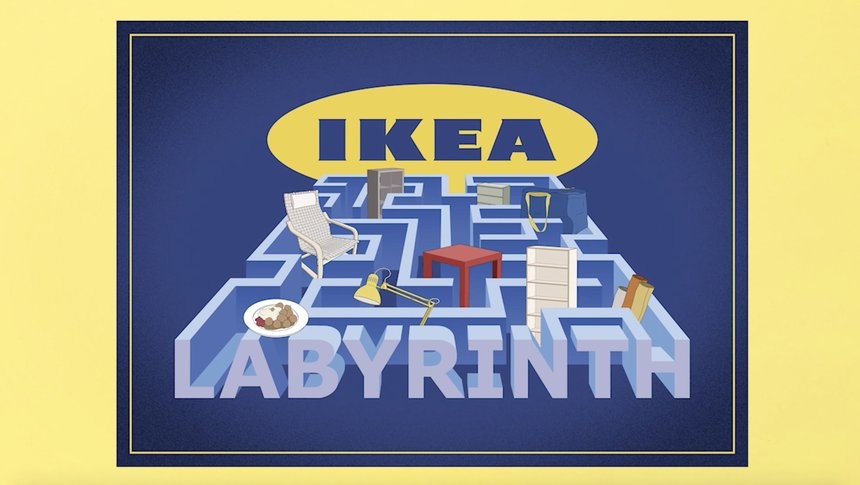In the world of retail, understanding consumer behavior is essential for driving sales and enhancing customer experiences. One of the most fascinating psychological phenomena in this context is The Gruen Transfer. Named after Austrian architect Victor Gruen, this concept refers to the moment when shoppers lose track of their original intentions and become more susceptible to impulse buying. Retailers strategically design environments to trigger The Gruen Transfer, subtly guiding customers toward making unplanned purchases. By understanding The Gruen Transfer, businesses can optimize store layouts, increase sales, and create more engaging shopping experiences.
What is The Gruen Transfer?
The Gruen Transfer occurs when shoppers enter a retail space with a specific purpose or purchase in mind but become distracted by the environment and lose focus on their original intent. This psychological shift makes them more likely to browse and make impulse purchases. People credit Victor Gruen with pioneering the modern shopping mall. He originally envisioned these spaces as community hubs that would encourage leisurely shopping. However, retailers quickly recognized the potential of this concept to increase sales by keeping shoppers in stores longer and prompting unplanned purchases.
Environmental psychology deeply roots the concept of The Gruen Transfer. Retailers carefully design environments to create a sense of comfort and relaxation. This makes it easier for customers to lose track of time and indulge in browsing. This phenomenon doesn’t limit itself to physical stores. It can also occur in online shopping environments. Designers create many websites to engage users and encourage additional purchases.
The Psychology Behind The Gruen Transfer
The Gruen Transfer is driven by several psychological principles, including distraction, sensory stimulation, and the desire for discovery. One of the key factors is the strategic use of distractions. Retailers design store layouts with eye-catching displays. They strategically place merchandise, and attractive signage that draw shoppers’ attention away from their original goals. These distractions disrupt the shopper’s focus, making them more likely to explore the store and consider additional purchases.
Sensory stimulation also plays a significant role in triggering The Gruen Transfer. Retailers use lighting, music, scents, and even temperature to create an inviting atmosphere that encourages shoppers to stay longer. The longer customers remain in the store, the more likely they are to experience The Gruen Transfer and make impulse purchases. For example, soft lighting and soothing music can create a relaxed environment. In addition, the subtle scent of fresh coffee or baked goods can evoke positive emotions. This increases the likelihood of unplanned spending.
Another psychological factor that contributes to The Gruen Transfer is the human desire for discovery and novelty. Retailers capitalize on this by creating environments that invite exploration and surprise. For instance, stores often feature new or seasonal products prominently, encouraging shoppers to browse and discover something unexpected. This sense of discovery can lead to impulse purchases as customers come across items they hadn’t planned to buy but find appealing in the moment.
Practical Applications of The Gruen Transfer in Retail
Retailers across various industries use The Gruen Transfer to enhance customer experiences and drive sales. One common application is in the design of store layouts. Stores are often designed with winding paths, strategically placed displays, and focal points that draw shoppers deeper into the space. These layouts encourage exploration and increase the chances of customers encountering products they hadn’t initially considered.
For example, grocery stores often place staple items like milk and bread at the back of the store. This requires customers to walk past numerous other products. Along the way, shoppers may encounter eye-catching displays of snacks, beverages, or seasonal items that tempt them to make additional purchases. This layout design effectively triggers The Gruen Transfer, leading to higher sales.
Department stores and shopping malls also use this to their advantage. Malls are designed to create a sense of discovery. This is done by arranging stores in a way that encourages shoppers to explore different areas. Retailers within these malls often use enticing window displays and promotional signage to draw customers in, even if they didn’t initially plan to visit that store. Once inside, the carefully curated environment can lead to impulse purchases as shoppers browse and discover new products.
The Gruen Transfer is not limited to physical retail spaces; it also applies to online shopping. E-commerce websites are designed to keep users engaged. The do this with features like personalized recommendations, “customers also bought” sections, and limited-time offers. These elements create an environment that encourages browsing and exploration, increasing the likelihood of impulse purchases. For instance, an online shopper who initially visits a website to buy a specific item may end up adding several other items to their cart, driven by the strategically placed recommendations and promotions.
The Benefits and Risks of Using The Gruen Transfer
While The Gruen Transfer can be a powerful tool for increasing sales, it also comes with potential risks. One of the primary benefits of leveraging The Gruen Transfer is the ability to boost revenue through impulse purchases. By creating an environment that encourages exploration and discovery, retailers can increase the average transaction value and maximize sales.
Another benefit is the enhancement of the overall shopping experience. When customers enjoy their time in a store, they are more likely to return in the future and recommend the store to others. The Gruen Transfer can contribute to creating a positive and engaging shopping environment that fosters customer loyalty and repeat business.
However, there are also risks associated with The Gruen Transfer. One potential drawback is the possibility of overwhelming customers with too many distractions. If a store is cluttered or overly stimulating, shoppers may become frustrated or fatigued, leading to a negative shopping experience. Retailers must strike a balance between creating an engaging environment and ensuring that the shopping experience remains enjoyable and not overwhelming.
Additionally, over-reliance on The Gruen Transfer may lead to ethical concerns. Some critics argue that using psychological tactics to encourage impulse buying can be manipulative, particularly if it leads to consumers spending more than they can afford or buying items they don’t need. Retailers should consider these ethical implications and ensure that their use of The Gruen Transfer aligns with responsible and customer-centric business practices.
How to Implement The Gruen Transfer Effectively
For retailers looking to implement The Gruen Transfer effectively, it’s important to start by understanding the target audience and their shopping behaviors. Conducting market research and analyzing customer data can provide valuable insights into what types of environments and stimuli are most likely to engage customers and encourage exploration.
Next, retailers should focus on creating a store layout that invites discovery while guiding customers through key areas. Strategic placement of displays, focal points, and essential items can help direct the flow of traffic and encourage impulse purchases. It’s also important to ensure that the environment is visually appealing, with a balance of sensory elements that enhance the shopping experience without overwhelming customers.
In addition, retailers should consider incorporating digital elements into their physical stores to enhance The Gruen Transfer. For example, interactive displays, QR codes, and mobile apps can provide customers with additional information and personalized recommendations, further encouraging exploration and engagement.
Finally, it’s crucial to monitor the effectiveness of The Gruen Transfer through customer feedback, sales data, and in-store observations. By continuously evaluating the impact of store design and layout on customer behavior, retailers can make adjustments as needed to optimize the shopping experience and drive sales.
Conclusion
The Gruen Transfer is a powerful psychological phenomenon that plays a significant role in retail shopping. By understanding how to leverage The Gruen Transfer, retailers can create environments that encourage exploration, increase impulse purchases, and enhance the overall shopping experience. However, it’s important to strike a balance between creating an engaging environment and ensuring that the shopping experience remains positive and customer-centric. When implemented effectively, The Gruen Transfer can be a valuable tool for driving sales, building customer loyalty, and achieving long-term success in the competitive world of retail.


